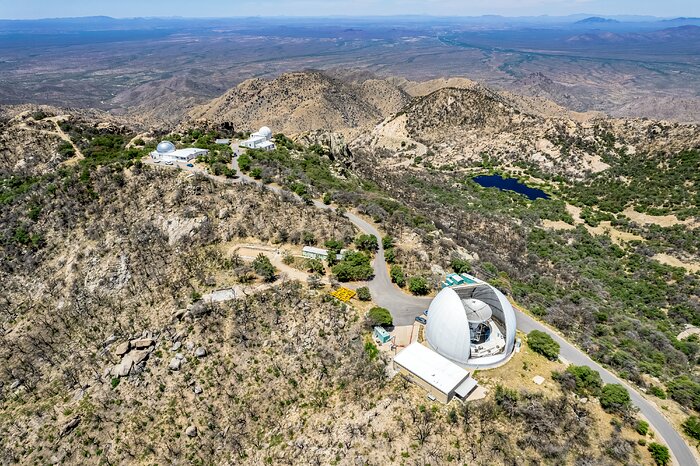Round-the-Clock Observing
This aerial drone view shows the Southwest Ridge of the U.S. National Science Foundation Kitt Peak National Observatory (KPNO), a Program of NSF NOIRLab, recovering from the Contreras Fire that reached the observatory grounds in June 2022. In the distance are the Hiltner 2.4 meter (left) and McGraw Hill 1.3 meter (right) reflecting telescopes that constitute the MDM Observatory that is owned and operated by a consortium of universities — University of Michigan, Dartmouth, University of Ohio, Ohio State University, and Columbia University. At work in the lower right corner is the UArizona 12-meter Telescope, a radio telescope, inside its dome. Operators of optical telescopes must wait for nightfall to do their observing as light from distant objects is outshone by the Sun during the day. The Sun’s emission at radio frequencies is, however, comparatively weak, and therefore won’t interfere with radio frequencies received by telescopes, enabling round-the-clock observations. Furthermore, cloud cover in our atmosphere doesn’t block radio waves, so observations can even be made in cloudy weather.
Credit:KPNO/NOIRLab/NSF/AURA/P. Marenfeld
About the Image
| Id: | iotw2417a |
| Type: | Photographic |
| Release date: | April 24, 2024, noon |
| Size: | 5464 x 3640 px |
About the Object
| Name: | McGraw-Hill 1.3-meter Telescope, The Hiltner 2.4-meter Telescope, UArizona 12-meter Telescope |
| Category: | Kitt Peak National Observatory |
